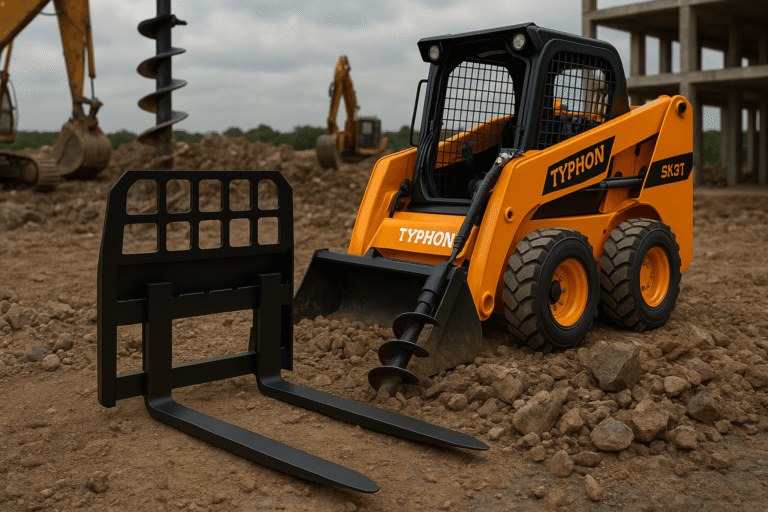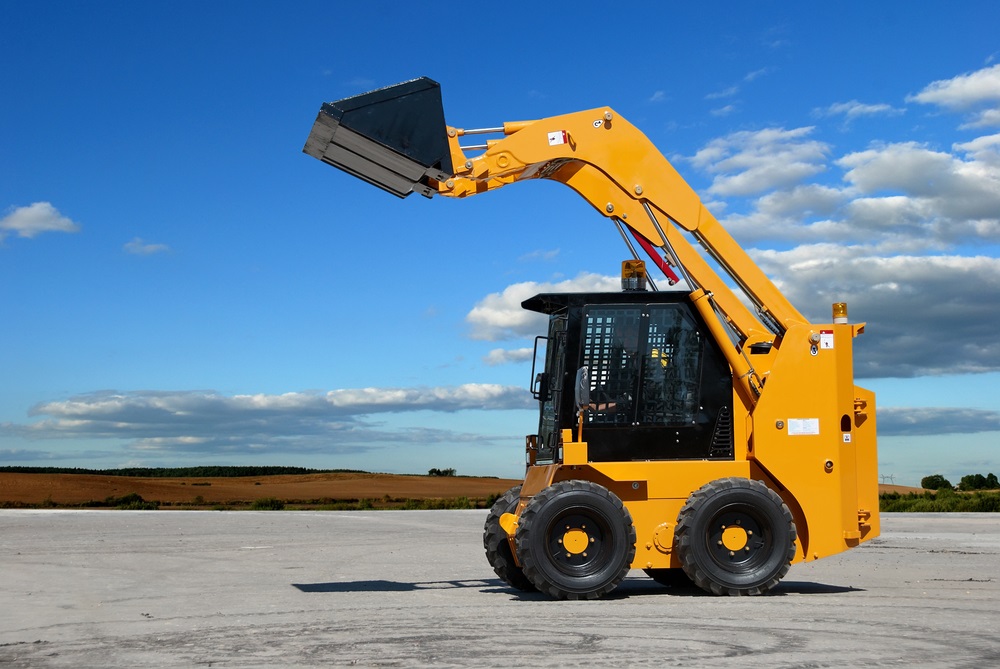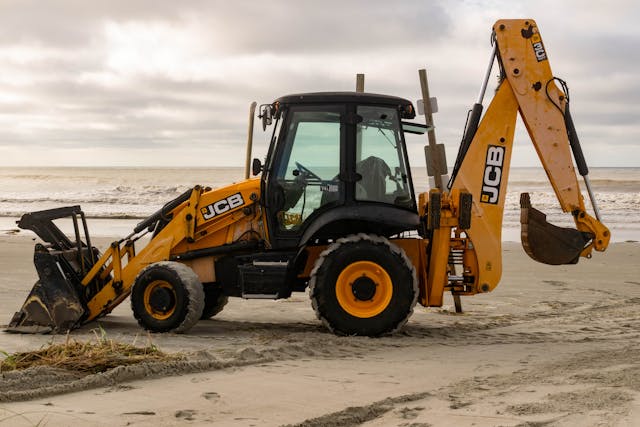How to Use Augers in Rocky Soil
Drilling through rocky soil with an auger can feel like battling a concrete fortress. Fortunately, the following technics can make this tough job much simpler. The best approach to use augers in rocky soil is to start with proper equipment choice, in particular, heavy augers with alloy cutter teeth, which are made for working on rocky land.
The following guideline will present you with 7 expert-approved ways to get the superlative drilling results in rocky soil in 2025.
If you are dealing with rocks in the middle of your drilling project, no matter whether you are a weekend warrior or a professional contractor, you will feel where we are coming from. We have, thus, relying on industry experts’ feedback and the latest in the market, listed a few of the steps to ensure that you can:
- Choose the right auger type and size
- Implement effective drilling techniques
- Maintain your equipment properly
- Ensure safety throughout the process Ready?
Let us show how to change your rocky soil drilling task from unmanageable to friendly project.
Key Takeaways:
- Heavy-duty augers with carbide-tipped blades are necessary for rocky soil because they provide more penetration power and also longer life than the traditional augers.
- The choice of the most appropriate equipment is vital – you should choose the correct size and type of the auger in accordance with your specific soil conditions and the project you intend to carry out.
- Safety is the most important issue – you must always comply with the fire safety rules and wear the necessary protective gear when you use drilling equipment.
- In rocky soil drilling, both down pressure and speed control are important misuse of force can lead to damage to the equipment and the ground.
- Keep your auger’s teeth and parts in top shape and your equipment will not only function at its peak but will also last longer.
Essential Tools for Rocky Soil Drilling
A Rock Auger Guide
The selection of the most suitable equipment for rocky soil digging is vital for a good hole drilling result. Dedicated rock augers with teeth made of carbide are the solution that is designed specifically for those difficult environments, compacted soil. These durable products have better flighting and superior cutting abilities, so they are the best drilling equipment for extreme ground conditions.
If the land is rough and hard, you might consider using bullet-style rock augers. This unique product has teeth made of hard steel that are capable of breaking rock and hard-packed soil. The twisted pattern of the flighting also aid in the process of removing the waste material and maintaining the tool’s position during the operation.
A typical earth auger that can be fitted with replaceable teeth is enough for sporadically rocky areas but if you want to be sure that this is the best solution for you with respect to your geology and rock conditions, then nothing beats a personal visit. In this case, you might consider the hole diameter from 4 to 16 inches that are generally the range for post applications the most common.
Other Equipment and Tools
Having the correct equipment is not only about the auger. A well-assorted toolkit should contain among others the following:
- Loosening stubborn rocks by applying immense work effort with digging bars
- Clearing debris through heavy-duty shoveling
- Reaching the desired depths by benefiting from extension shafts
- Hole depth accuracy by the use of measuring tools
- Work gloves and eye protection equipment as safety precautions
When there are larger rocks to deal with, such additional equipments as rock breaker attachments can be very useful. These supplements are matched with the auger system and can remove the obstacles that potentially can stop your work.
It is beneficial to have not only spare cutting teeth but also maintenance tools at hand so that your equipment is more durable in rocky conditions. With these replacement parts, you are able to guarantee smooth operation of productivity without any lengthy downtimes.
💡 Key Takeaway: The key to success in rocky soil drilling is the use of heavy-duty rock augers and accessories, and a complete toolkit is available for efficient operation and minimal interruptions.
Differentiating rocky terrain based on their characteristics
Rock Types and Characteristics
Prior to drilling with an auger through rocky soil, it is paramount to have familiarity with the various types of rocky terrains. The rocky ground can display different characteristics from loose rocks scattered around the place, to hard rock layers underneath. Moving in to the next layers there might be a situation of rocks that just went loose and are mixed with clay soil, and a step further on you may have gravel or even the more solid limestone. The condition of the ground may be something the use of a drill will not have an easy time with, and the unique features of each type of ground are therefore immediate concerns when it comes to annealing by auger.
Soil Composition Analysis
For better assessment of the kinds of highlights contained in the soil, the determination of the soil composition is a key factor. Detect beholding to the soil composition changes compels to implement the right method. At first, you could start with a rather small investigation to learn about the characteristics of the rock in the obtaining of soil samples. Check that your soil is only soil mixed with rocks and not completely rocky terrain, dry or moist. If wet conditions are the case you may have drilling efficiency distorted. Learn the signs to check for the presence of moisture in the dug-up soil.
Observe also the size and distribution of rocks – are they small, isolated chips or large, connected formations? Knowing these details helps you decide on proper auger types and drilling techniques. In addition to that, you can gather soil samples from different depths to cover the entire terrain profile when you are to have a correct ground condition evaluation. Ground conditions analysis is an essential step for undesirable outcomes of drilling operations in auger units.
Pre-Drilling Preparation
Before starting the drilling process in rocky soil, preparation is a key factor for safety and efficiency. Being organized to plan and get ready can help to avoid accidents and guarantee a successful drilling process.
Site Marking and Safety Checks
As an equipment operator, it is your responsibility to always follow safety requirements. The first step would be to ask your local utility company to mark the underground lines – this will not only save you from harming yourself but also from costly repairs.
Indicate the spot where you want to drill by using spray paint or pegs. This will not only help you avoid accidents but also keep your project neat and organized. Measure and check once more the distance between the marks to ensure that they are in line with the requirements of your project.
Remove any obstacles such as tree roots, large rocks, or debris on the surface of the area where drilling is planned, which could be a hindrance to the auger. Also, ensure the workspace is free of the tripping hazard and there is enough space for equipment and personnel to move around the place of operation freely.
Look at the slope and the stable situation of the surroundings. The rough soil can be erratic, so check if it is necessary to take extra safety measures such as the provision of temporary barriers or supports, especially in projects of the slopes.
💡 Key Takeaway: Good planning is the main stage of rocky soil drilling, in which the preparation is very thorough, utility marking procedure and safety checks are important, you are doing everything you can to avoid accidents and make your work time efficient
Selecting the Right Auger Type
When you are working with rocky soil, it is true that the selection of the right type of an auger is a very decisive factor; that the correct tool may mean the difference between a smooth process and an exhausting effort of hole digging.
Power Options
The most efficient auger for uncompromising rocky terrain needs a lot of energy to pump through the unyielding ground. Manual drills are often unsuitable for use with rocky conditions; thus supported with electricity may be a more practical choice. A real big auger with a minimum of 43cc engine power is just what is needed to drill through stone or highly compacted soil.
An example of such terrain is also an example of an unfavourable position that benefits from a hydraulic drive. The latter is giving the former options for tapping into the rocks’ capability to take the pressure and resist the force without stopping.
Specifications
Look for the one specific combination of metal, carbide, and rock that destroys the former without losing the sharpness of its edge. A properly reinforced helical auger bit and a shaft of solid metal will further enable the user to pass the high-pressure rock drilling stage easily.
The optimal auger for rocky soil will be one with a working section ranging from 6 to 12 inches, as it provides accurate and efficient post-hole dimensions while preserving the drilling power. It is suggested that you select only those models that have easily replaceable teeth, as the latter will most likely render unusable quicker in the event of their use on rocky terrain.
💡 Key Takeaway: When in need of a new auger for heavy soil conditions, one must keep in mind to choose a tool that has a high density of power due to the use of the carbide-teeth tipped auger, being robustly built and using the correct diameter for the drilling process.
Proper Drilling Technique – Speed and Pressure Control
It is very important to have the right technique when drilling in a rocky area. The most important thing is to keep the applied force uniformly downward and to adjust the drilling speed according to the situation.
Keep low speed when you start to locate and faster speed when it’s already a farther position.
To achieve the best results, press gently on the auger without pushing it. Forces in excess may cause damage to both your equipment and the soil structure nearby. Besides, the auger’s working itself is a cure for the hard ground.
If the bit is stuck with a hard object and heavy pressure is kept, relief of pressure will definitely help out and the result will be a kind of peaceful passage through the obstacle. This way might be slower but your equipment still remains undamaged and favorable results will still be realized.
When there is a resistant rock in front of you, the most advantageous thing you can do is not to increase the force, but to move the auger slowly and carefully, providing enough time for the cutting edges of the auger to act. This unofficial strategy secures the non-binding of the equipment and the avoidance of the possible destruction of the wood, if any.
💡 Key Takeaway: Regulate the speed of your drilling and maintain the right amount of force while at the same time giving the auger room to work naturally through rocky soil for the best performance and the longest life cycle of the equipment.
Final Share
These top seven professional suggestions can help you drill in rocky soil easily and accurately. Remember that progress is made by using the proper instruments, notably heavy-duty augers with carbide-tipped blades, and drilling methods that match soil requirements.
From tool safety to underground utility knowledge, safety should always come first. Working under the finest principles and with the greatest equipment will make the hardest rocky soil projects easier, saving time and resources.
Buy the correct equipment and follow these rules to improve drilling efficiency, whether you’re a DIYer or a professional gardener. Take time to assess your ground conditions, choose the correct augers, and maintain your equipment. Your rocky soil drilling initiatives are no longer a source of disruption; they may now be successful outdoor activities.
FAQs
What is the average lifespan of an auger when regularly used in rocky soil?
Under normal usage and if proper maintenance are done, your auger should last for about 2-3 years only. If the thing that changes is the intensity of usage, soil composition, and the quality of the equipment, the numbers can also change. Regular checking of the teeth, the integrity of the shaft, and unit storage can indeed lengthen the life of the product.
Can I use the same auger for both rocky soil and clay soil?
A variety of augers can drill on hard and rocky soil as well as shale. However, it is advisable to use an auger that is specifically designed for rocky soil in case of some soil types. A rugged construction with stronger teeth and an upgraded number of teeth for rocky soil augers are in a better position to handle the rocky terrain. In contrast, as clay soil is generally involved, the mainstream of clay soil augers may fail to work well when they encounter rocks.
How deep can an auger typically drill in rocky soil?
The vast majority of drillers can successfully drill holes 2-4 feet deep in the middle of clusters of rocks. The basics of hole depth in this context are affected by rock density, the auger type, and the source of energy. The ability to drill much deeper into the ground is characteristic of hydraulically operated heavy-duty augers providing that proper drilling conditions are in place. Nevertheless, it is difficult to carry a portable drill which only goes for less than or equal to 2 feet deep in conditions of rocks being present.
What are the signs that my auger needs maintenance or replacement?
Equivalent to the twinkling of an eye, best is both; look for worn or broken teeth, spot bent shafts, unusual vibrations, or decreased drilling efficiency. The auger is giving an obligation thereby red to be replaced in a scenario where it fails to go through the soil or make a noise that is disturbing. Time by time assessment of the power head and clutch system is also important for a user.
How often should I sharpen auger teeth when working in rocky ground?
If you drill hard ground, honing the teeth every 20-30 holes may be necessary. Bear claw tooth sets should be checked for damage or wear regularly because their lifespan is usually extended, but they are still subject to the periodic checking rule like the other rhyme of nature—no one is immortal.
What safety precautions should be taken specifically for rocky soil drilling?
Wear glasses, boots, and clothing before work, avoid certain rocks, and remember that nature may produce accidents at any moment. Wearing safety glasses, shoes with toe caps, and avoiding standing in water are safety measures. minimize using just one hand and rotate your second hand side to side on the drilling equipment to minimize rapid backward or forward movements that might cause injury. If you drive across rocky terrain without a buddy or anybody else, you may send an S.O.S.





